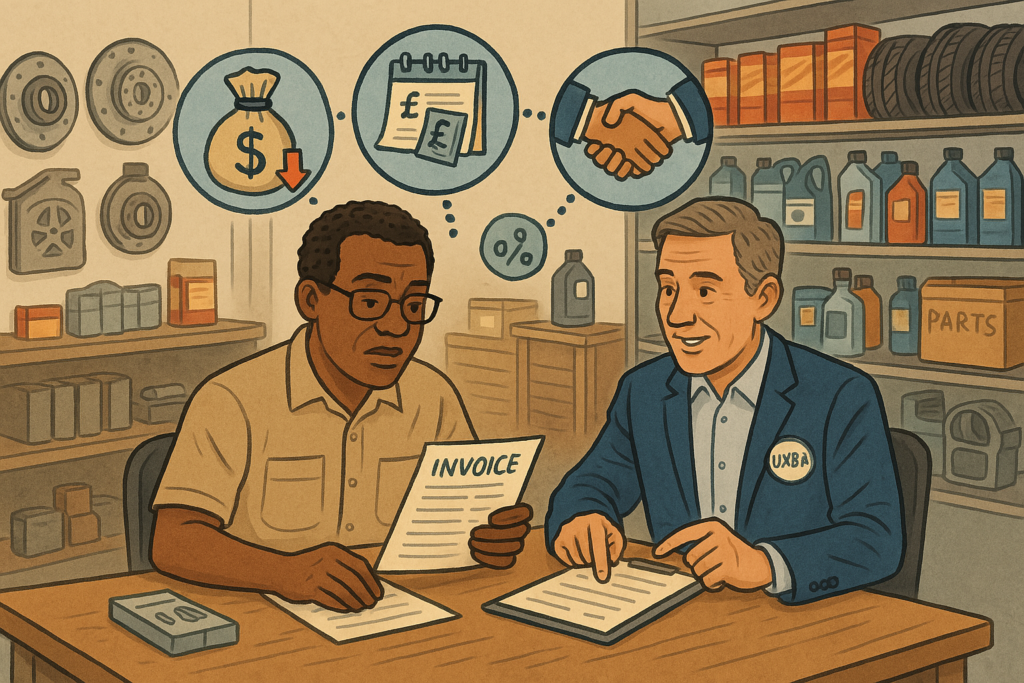Smarter Cost Control: Simple Tips for Small Business Owners
Most businesses have overheads but for SMEs, managing costs without a dedicated procurement team can be a challenge. With everyone already stretched, it’s easy to miss opportunities to save money and improve margins.
If your financial reports suggest there’s not enough left at the end of the month, it might be time to take a closer look at where your money is going.
Here are some easy-to-action tips to help reduce costs, improve cash flow and strengthen your bottom line without compromising on quality.
1. Start with the Big Expenses
Small costs add up! But start by reviewing the highest-value purchases first. Go through your purchase ledger, list all major expenses over the past 12 months and identify your top spending categories.
This might include:
- Insurance
- Office supplies
- Printed materials
- Courier services
- Subscriptions
Sort your suppliers by how much you spend with each. That’s where your biggest savings potential often lies.
2. Consolidate Where Possible
Some suppliers offer far more than you think. A stationery provider, for instance, may also supply uniforms, PPE, cleaning products or catering materials.
By consolidating purchases with one supplier, you can often:
- Get better prices
- Simplify your admin
- Strengthen your buying power
Offering more business to fewer suppliers gives you leverage to negotiate and streamline your operations.
3. Revisit Existing Deals
If your business has grown, chances are you’re now buying more than when you first signed up with a supplier. But are you still paying the same old rates?
Ask for a better deal. Show them how much more business you now bring. Suppliers value loyal customers who spend more and many will offer discounts to retain your account.
4. Negotiate Rebates on Higher Spending
With growth or consolidation, you may reach a level of spending that qualifies for retrospective rebates, generating a lump sum refund based on how much you’ve spent over a set time.
Speak to your supplier about this. It’s a smart way to unlock value without changing providers.
5. Know When to Switch Suppliers
Loyalty is valuable. But not if it costs your business. If a long-standing supplier isn’t competitive, it may be time to move on.
Before switching:
- Compare like-for-like quotes
- Confirm the new supplier’s service levels
- Request fixed pricing for 12 months
- Check financial stability and ask for references
Change might feel uncomfortable—but protecting your business comes first.
6. Use Payment Terms as a Bargaining Tool
If you can pay faster than 30 days, use that flexibility to negotiate discounts. Some suppliers will accept a lower price if they get paid quicker. But don’t agree to shorter terms unless there’s a clear benefit and a guarantee that prices will stay fixed for at least a year.
Final Thought: Small Changes, Big Gains
These cost-saving tactics don’t require big changes. But they do require action. The time you spend reviewing your spending could return thousands of pounds in improved margins and cash flow.
If your internal resources are limited—or you want support from someone who’s done this before—get in touch with UK Business Advisors.
Our network includes experts who can:
- Review your current spend
- Help you negotiate better deals
- Guide your cost management strategy
Don’t let unnecessary spending eat into your profits. Let’s get your money working harder.

